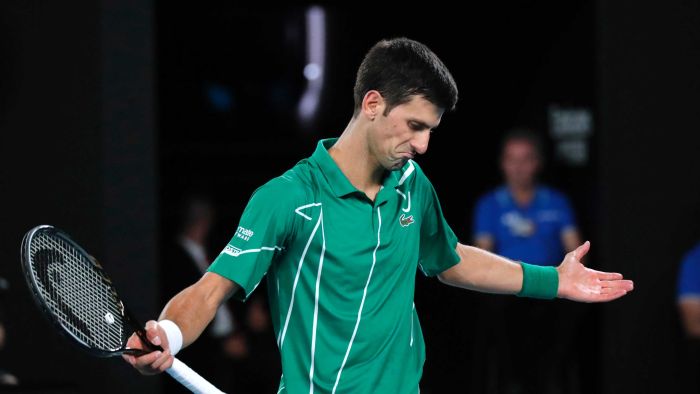Reports that Victoria will not only host the Australian Open tennis in January but also the various lead-up tournaments usually played elsewhere seems like a fitting reward for months of personal sacrifice.
With its summer garden party atmosphere, the Australian Open has become as much an officially branded celebration of Melbourne as a sporting event, with the feted international superstars the beloved special guests.
And yet for anyone who has cast a distant eye on the fractured and sometimes wilfully idiotic official and unofficial tennis seasons, there will be some obvious misgiving about how the circus’s elongated trip to town will play out.
In a purely social sense, the international tennis scene descending on post-lockdown Melbourne seems a bit like the cast of The Hangover taking a vacation in Gilead.
Scenes of shirtless players parading in a nightclub conga line during that squalid petri dish known as the Adria Tour was just the most obvious demonstration of the wilful ignorance — or just pure entitlement — of players whose subsequent COVID-19 cases endangered both lives and livelihoods.
Rightly, Novak Djokovic was pilloried as much for his involvement in this criminally ill-advised self-indulgence as he was for the relatively innocent swat that clipped a lineswoman causing his disqualification from the US Open.
But beyond the startling demonstration of stupidity in the Balkans, it is the individual and often entitled nature of tennis — as well as the very different environment in which the US Open and French Open were staged — that will present an enormous challenge for Australian Open organisers.
Containing the feted multi-millionaires of the Indian cricket team in a COVID-proof bubble is one thing. Ensuring hundreds of professional tennis players and their coaches, fitness trainers, agents and others rather patronisingly referred to as “my team” adhere to strict local regulations will pose greater problems.
Even more so given the sense of entitlement among some preening stars on the ATP and WTA Tour has been entrenched at the Australian Open by the constant fluffing required to win and maintain their affection.
Where Wimbledon, Flushing Meadows and Roland Garros have remained secure in their Grand Slam status, some pampering on top of the spiralling prize money has been needed here to convince picky players that distant Melbourne Park was worthy of the same level of affection as the other Grand Slams.
This Australian Open’s insecurity was born of legitimate threats to the tournament’s Grand Slam status from other Asian cities. This in turn prompted the lavish State Government spending required to build what is now a tennis palace by the Yarra, but also an almost servile approach to the powerful players lobby.
The hard earned and expensive result of both this investment and servility is a tournament that captivates a city for two weeks, now comfortably holds its place among the world’s Big Four tournaments and which prompts players to tick the Melbourne box in the annual survey about the most enjoyable Grand Slam tournament.
Tennis stars unlikely to be pampered
But, for all that, should Melbourne still be subject to even eased lockdown conditions it will be intriguing to see how the precious butterflies of the tennis biosphere handle a less boisterous, less socially active and less ego-stroking Australian Open.
This is especially in light of the very different attitude toward COVID-19 taken by professional sport in parts of the world where infection rates are now at levels where the idea of containment, let alone daily zero infection and death rates, is mere pre-vaccine fantasy.




At the US Open and French Open a positive COVID-19 test was a warning sign but not a tournament killer in nations now suffering debilitating second waves after the delusion it was possible to “live with COVID”.
In Australia, a Melbourne Park cluster would not only stop the Australian Open in its tracks but bring down the wrath of a weary public that would not take kindly to a player who concealed symptoms or who failed to observe protocols.
So it will be intriguing to see how those tennis superstars, whose idea of brutal hardship is a ball kid taking too long to fetch their towel, handle the as-yet unplanned protocols required to cash their guaranteed five figures first-round loser cheques.
“We have a very different construct to the AFL and cricket because we are bringing in a lot of international people and their entourage and we’ve got to ensure they stay on a very rigid, tough lockdown,” Australian Open tournament director Craig Tiley told the Herald-Sun.
Rigid and tough are words that apply to the training schedules of professional tennis players, but not necessarily the way they are accustomed to being treated — especially in Melbourne. Hopefully the lessons of a disrupted year will ensure compliance.
Because even the most popular tennis superstar will find weary Melbourne in no mood to indulge ‘COVIDiots’, regardless how well they can smack a forehand.







